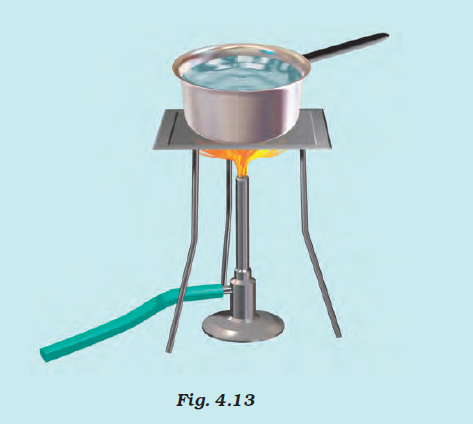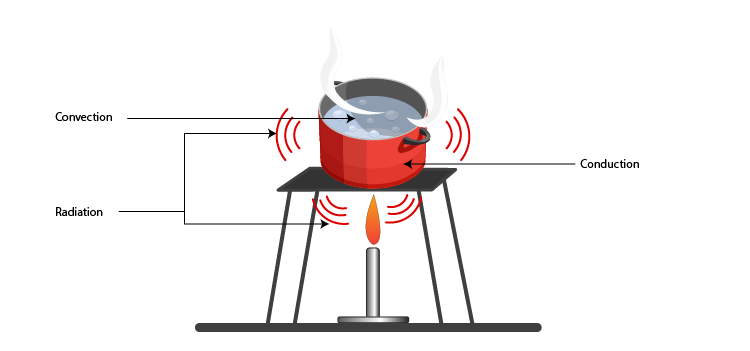Need help? We're here to assist you!
Thank You for Enquiry, we will contact you soon!
Close
The Class 7 is an important year in a student’s life and Science is one of the subjects that require dedication, hard work, and practice. It’s a subject where you can score well if you are well-versed with the concepts, remember the important formulas and solving methods, and have done an ample amount of practice. Worry not! Home Revise is here to make your Class 7 journey even easier. It’s essential for students to have the right study material and notes to prepare for their board examinations, and through Home Revise, you can cover all the fundamental topics in the subject and the complete NCERT Class 7 Science Book syllabus.

Exercise Questions
1. State similarities and differences between the laboratory thermometer and the clinical thermometer.
Solution:
Similarities
Differences
| Clinical Thermometer | Laboratory thermometer |
| Temperature range is 35 to 42 0 c | Temperature range is -10 to 110 0 c |
| Used to measure human body temperature | Used to measure temperature in the laboratory |
| It has kink which prevents immediate backflow of mercury | It does not have a kink |
2. Give two examples each of conductors and insulators of heat.
Solution:
Conductors: Iron and copper
Insulators: Plastic and wood
3. Fill in the blanks :
(a) The hotness of an object is determined by its __________.
(b) Temperature of boiling water cannot be measured by a _____________ thermometer.
(c) Temperature is measured in degree ______________.
(d) No medium is required for transfer of heat by the process of __________.
(e) A cold steel spoon is dipped in a cup of hot milk. Heat is transferred to its other end by the process of ______________.
(f ) Clothes of ______________ colours absorb heat better than clothes of light colours.
Solution:
(a) The hotness of an object is determined by its temperature .
(b) Temperature of boiling water cannot be measured by a clinical thermometer.
(c) Temperature is measured in degree Celcius .
(d) No medium is required for transfer of heat by the process of radiation .
(e) A cold steel spoon is dipped in a cup of hot milk. Heat is transferred to its other end by the process of conduction .
(f ) Clothes of dark colours absorb heat better than clothes of light colours.
4. Match the following:
| Column-I | Column-II |
| (i) Land breeze blows during | (a) summer |
| (ii) Sea breeze blows during | (b) winter |
| (iii) Dark coloured clothes are preferred during | (c) day |
| (iv) Light coloured clothes are preferred during | (d) night |
Solution:
| Column-I | Column-II |
| (i) The land breeze blows during | (d) night |
| (ii) The sea breeze blows during | (c) day |
| (iii) Dark coloured clothes are preferred during | (b) winter |
| (iv) Light coloured clothes are preferred during | (a) summer |
5. Discuss why wearing more layers of clothing during winter keeps us warmer than wearing just one thick piece of clothing.
Solution:
More layers of clothing during winter keeps us warmer than wearing just one thick piece of clothing because air gets trapped in between the layers. As air is a bad conductor of heat it does not allow the heat to escape from the body.
6. Look at Fig. 4.13. Mark where the heat is being transferred by conduction, by convection and by radiation.

Solution:

7. In places of hot climate it is advised that the outer walls of houses be painted white. Explain.
Solution:
In places of hot climate, it is advised that the outer walls of houses be painted white because white colour reflects back most of the heat that is incident on it, as white is a poor absorber of heat. This helps in keeping the house cool.
8. One litre of water at 30°C is mixed with one litre of water at 50°C. The temperature of the mixture will be
(a) 80°C (b) more than 50°C but less than 80°C (c) 20°C (d) between 30°C and 50°C
Solution:
The temperature of the mixture will be between 30°C and 50°C because hot water loses heat and simultaneously cold water gains heat. This keeps the temperature in between 30°C and 50°C.
9. An iron ball at 40°C is dropped in a mug containing water at 40°C. The heat will
(a) flow from the iron ball to water.
(b) not flow from the iron ball to water or from water to the iron ball.
(c) flow from water to the iron ball.
(d) increase the temperature of both.
Solution:
Answer is (b) not flow from the iron ball to water or from water to the iron ball because both of them have the same temperature of 40°C.
10. A wooden spoon is dipped in a cup of ice cream. Its other end
(a) becomes cold by the process of conduction.
(b) becomes cold by the process of convection.
(c) becomes cold by the process of radiation.
(d) does not become cold.
Solution:
The answer is (d) does not become cold because wood is a bad conductor of heat.
11. Stainless steel pans are usually provided with copper bottoms. The reason for this could be that
(a) copper bottom makes the pan more durable.
(b) such pans appear colourful.
(c) copper is a better conductor of heat than stainless steel.
(d) copper is easier to clean than stainless steel.
Solution:
The answer is (c) copper is a better conductor of heat than stainless steel.